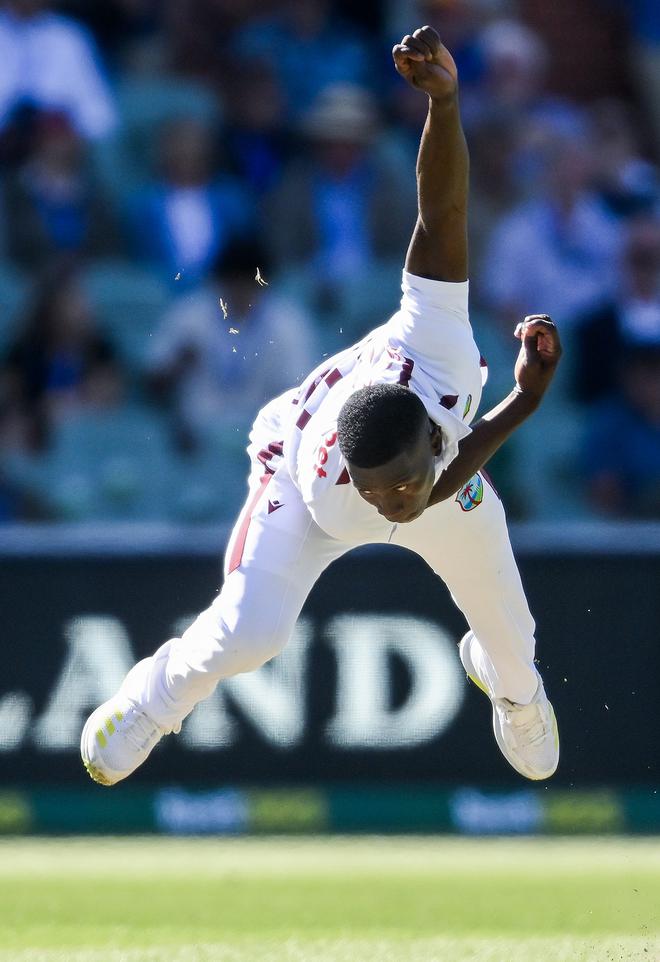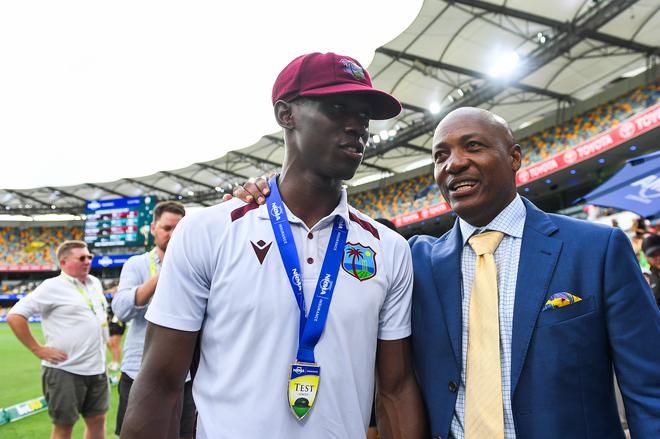Men have a strange equation with their lacrimal glands. They would rather blink hard than cry. It could be social conditioning ever since those hunting days of yore when dark caves and a warm fire were the only luxuries that mankind knew. The tear ducts are often wrongly deemed a vestigial remnant by the male half of the species and then you have those wretched tropes like men don’t cry.
Yet last Sunday, many men across the cricketing globe, despite being in denial, found some moisture seeping into their eyes. For those under the camera’s relentless gaze, especially cricketing stars like Brian Lara and Carl Hooper now doubling up as commentators, there was no place to hide. Lara’s eyes brimmed while Aussie great Adam Gilchrist held him tight and Hooper strode towards a wall, trying to conceal his fragile but happy state.
The bridge of nostalgia
Equally for men of a certain vintage, and women too, belonging to an era that worshipped Vivian Richards and Malcolm Marshall, the eyes turned damp. Old friends were texted, this was the bridge of nostalgia, and a shared pride rippled along with the triumphant West Indians at Brisbane’s Gabba. The men from the Caribbean had finally defeated Australia in a Test Down Under after 27 years. A two-Test series was drawn level at 1-1. Even the vanquished skipper Pat Cummins seemed happy!

This was joy unbridled. Current fans of the willow game may have New Zealand as their second favourite side after their respective national squads but for many, hiding their age with hair-colour but forever believing that their hearts are young, the West Indies is an eternal favourite.
And who best to rekindle the torrid embers of an old sporting love affair but a young fast bowler? Shamar Joseph is a modern version of those dispensers of fire when some like Michael Holding were referred to as ‘Whispering Death’. There is an element of the late Marshall too in him, be it in his height or the way he steams in to land his thunderbolts while his back arches for a millisecond and the arms blur.
The 24-year-old is from Guyana, a tiny nation resting upon the top fringes of South America, and yet considered as part of the West Indian archipelago, specifically when it comes to cricket. Hailing from Baracara, a tropical village where timber logging was his primary vocation, Joseph played tape-ball cricket and eventually moved to a town called New Amsterdam. In a rapid ascent to top-flight cricket, he caught the selectors’ eye and soon played for Guyana. He finally learnt the game’s finer points and technique. The rough-cut granite now seemed set to evolve into a polished diamond.
Still, pathos was the overwhelming theme that shadowed the West Indians. These men even failed to qualify for last year’s ICC World Cup in India. The dirge was being played and be it sunshine, a silver lining or even that elusive rainbow, all seemed impossible. But Joseph, like Moses parting the seas, lent hope. He snapped up a five-for on debut in the first Test at Adelaide, and scalped the likes of Steve Smith and Marnus Labuschagne. He also scored some handy runs even if the host prevailed with a 10-wicket victory.
When Kraigg Brathwaite’s men moved to Brisbane, it seemed as if another defeat was just around the corner. Fans wavered between dreams about West Indian miracles and presumptions about inevitable Australian wins. The first innings joust mildly tilted towards the visitors thanks to a 22-run lead but this was against Australia in its backyard. Not much could be read into such a wafer-thin advantage.
Overcoming adversity
The West Indians ended up setting a target of 216 but a massive worry was centred around Joseph, who found a Mitchell Starc yorker thud into his boot. The batter retired hurt and questions remained about whether the bowler within him had turned comatose. Rationality can hold an unforgiving mirror but sport can crack that glass into smithereens. It did through Joseph.
He bowled through pain, running in hard even if he gingerly walked towards the top of his run-up. This was a man willing himself to fight and his yield of seven for 68 is one of the greatest spells of fast bowling. It helped the West Indies win by eight runs. Stumps were rattled, edges were taken and often Joseph ran with exuberance while his teammates converged on him.

Battle-hardened men like Lara, Hooper and Ian Bishop struggled with misty eyes. The trio knew what it was to win in their playing days but as commentators they have been the harbingers of bad news pertaining to the West Indies. These were men, who in their prime had relished the services of fast merchants like Curtly Ambrose and Courtney Walsh. Bishop himself was a mean speedster before injuries forced him to step aside.
This was a moment that many awaited with bated breath, even if ICC trophies were won in the past, be it the Champions Trophy (2004) or the World T20 (2012 and 2016). To win a Test against a strong rival was deemed impossible even if in limited overs’ contests, the West Indies could often sting.
But finally a Test was won and again it was Australia that sparked the turnaround. It was losses incurred primarily due to Australian spearheads like Dennis Lillee that forced Clive Lloyd to jettison spin and opt for his fiery quartet of Andy Roberts, Joel Garner, Holding and Marshall. That mid-1970s move toppled cricket’s hierarchy and with Gordon Greenidge, Desmond Haynes, Richards and Lloyd lending batting might, the West Indies became an indomitable force.
Gentler flavours
Climaxes involving the West Indies became a one-way street while the rivals quivered. And then gradually the losses started, talent migrated towards basketball and the fancy shores of the United States. There were fast bowlers but not many lasted and a new template was found. Dwayne Bravo, Kieron Pollard and Darren Sammy, with their big hits, agile fielding and medium pace of the lower notch, became the gentle flavours of Caribbean cricket.
Besides propping up their national unit in coloured clothing, they found a heaven in the Indian Premier League. The fear of lining up against a West Indian pacer had dwindled and the mind wistfully recalled those witty placards held up in Australia during the 1980s: “Rain, rain go away, come when the West Indies come!” Back then, the Calypso men with their raw pace and muscular batting were something to sigh over and praise.
For now, Joseph and his mates hint at a revival, and his words backing Tests are obvious booster-shots. While he takes a break and tends to his battered toe, the West Indies will wait for him. We will too and maybe the box of tissues can be kept handy.






